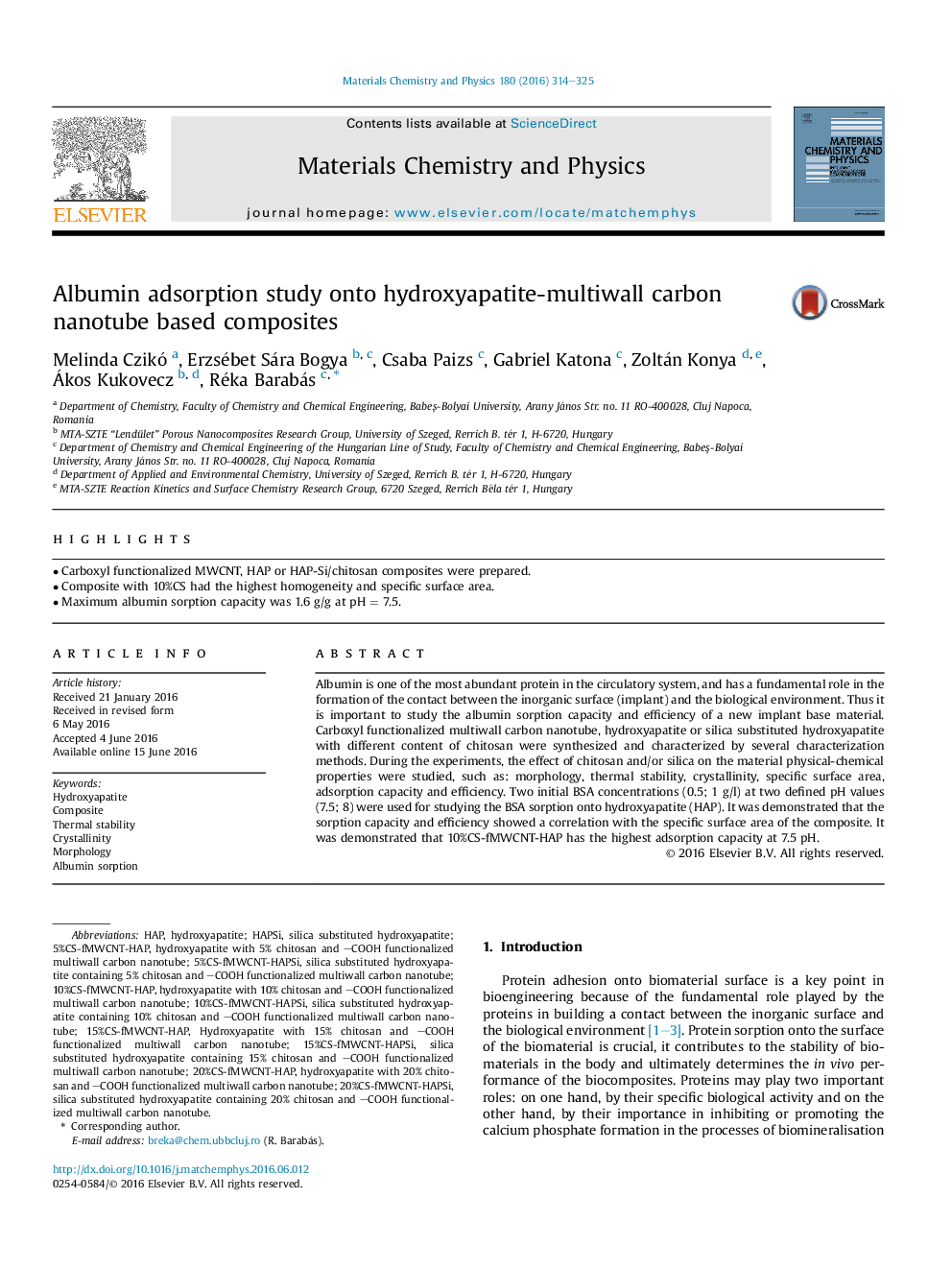| Article ID | Journal | Published Year | Pages | File Type |
|---|---|---|---|---|
| 1520542 | Materials Chemistry and Physics | 2016 | 12 Pages |
•Carboxyl functionalized MWCNT, HAP or HAP-Si/chitosan composites were prepared.•Composite with 10%CS had the highest homogeneity and specific surface area.•Maximum albumin sorption capacity was 1.6 g/g at pH = 7.5.
Albumin is one of the most abundant protein in the circulatory system, and has a fundamental role in the formation of the contact between the inorganic surface (implant) and the biological environment. Thus it is important to study the albumin sorption capacity and efficiency of a new implant base material. Carboxyl functionalized multiwall carbon nanotube, hydroxyapatite or silica substituted hydroxyapatite with different content of chitosan were synthesized and characterized by several characterization methods. During the experiments, the effect of chitosan and/or silica on the material physical-chemical properties were studied, such as: morphology, thermal stability, crystallinity, specific surface area, adsorption capacity and efficiency. Two initial BSA concentrations (0.5; 1 g/l) at two defined pH values (7.5; 8) were used for studying the BSA sorption onto hydroxyapatite (HAP). It was demonstrated that the sorption capacity and efficiency showed a correlation with the specific surface area of the composite. It was demonstrated that 10%CS-fMWCNT-HAP has the highest adsorption capacity at 7.5 pH.
